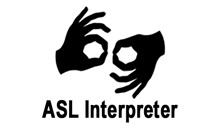
Professor Darrell Bock writes,
“Difficult conversations don’t have to be things to fight through; they may become moments where iron really does sharpen iron. … To pursue mutual understanding (not necessarily agreement) can be a realistic, initial goal in difficult conversations.”
Is that farfetched? He is writing here about conversations we might have as we engage those with whom we disagree. In fact, he’s talking about conversations we may experience as we engage the world around us.
This comes from his introduction to cultural engagement, Cultural Intelligence: Living for God in a Diverse, Pluralistic World. Chapter three is devoted to using knowledge about how conversations work in general in order to think clearly when conversations prove difficult.
He argues for the kind of self-awareness that involves thinking about three levels to every conversation. He calls this understanding of conversations, triphonic. Essentially, during a conversation, the self-aware person will remember that all three levels are going on at the same time. The three levels are facts, filters, and identity.
The level of facts is a matter of weighing the various assessments, claims, and evidence being used. In many ways, this is usually where we focus our ears (listening for facts) and, hopefully, our mouths (speaking facts). But there is more going on in every conversation.
The level of filters is a bit harder to detect, but always present. As we are listening and speaking, there is a combination of “emotions, perceptions, and judgements” being shared (55). We filter the words of the conversation. Unlike the facts of a conversation, these perspectives or filters need to be “assessed on their own merits,” which is challenging. Each party introduces various filters into a conversation. And as speakers, we come with filters. For Bock, “being aware of this second level means that conversations need to drive toward some level of mutual understanding before moving into the hard work of assessing what is being discussed (56).” We engage rebuttal mode very quickly, while the other person is speaking, and this sometimes prevents us from listening well and, ultimately, understanding. In this way, Bock says we break “the Great Commandment of initial engagement: first, pursue mutual understanding; then move into assessment” (57).
The level of identity is “always in play in conversations” (58). This is where we consider what is at stake in the conversation, how I am impacted, whether I look good or look bad, my particular priority at the moment, my personal experiences, etc.? Bock says that we forget to listen for this filter both in ourselves, and in others. We can become so engaged in crafting our response that we stop listening; “the one element that tends to be missing in this mode of conversation is curiosity and deep consideration about what is driving the other person to express themselves as they are.” He concludes, the danger is reaching an impasse before we’re really tried to earnestly engage” (59).
I find all of this to be very helpful. Sometimes I practice this well, but sometimes I don’t. The insightfulness of Bock is that helps us understand how even difficult conversations work.
When a conversation is congenial, we experience less resistance to being a curious listener, interested in the speaker as a person made in the image of God. We are not quick to defeat. We seek to understand before assessing. We try not to presume motives, omnisciently. We happily slow things down for the sake of clarity and understanding. We listen for the filters and identity, not just the facts. And do the same to ourselves, with honesty. When a conversation is difficult, we cast these aside. Why?







